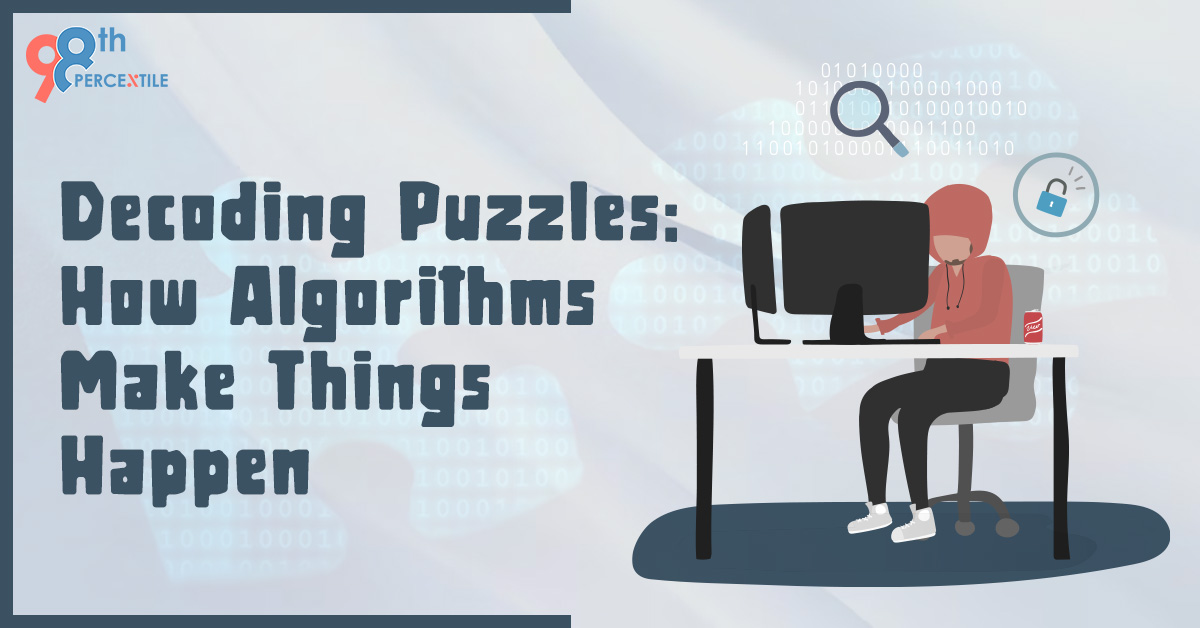Hey there, young explorers! Today, we're going on an exciting journey to learn about something super cool: algorithms. But don't worry; we won't be diving into complicated computer stuff just yet. Instead, we'll use everyday activities, like making a sandwich, to understand what algorithms are all about. So, let's get started on this delicious adventure!
What's an Algorithm?
An algorithm is like a magical recipe that tells a computer or a machine exactly what to do step by step. Just like you follow a recipe to bake cookies, computers follow algorithms to solve problems. Let's break it down further with a fun example: making a peanut butter and jelly sandwich!
The Peanut Butter and Jelly Sandwich Algorithm
1. Get the Ingredients: First, you need to gather your ingredients - bread, peanut butter, and jelly.
2. Lay Out the Bread: Place two slices of bread on a plate.
3. Spread Peanut Butter: Take a butter knife and spread peanut butter on one slice of bread.
4. Spread Jelly: Use another knife to spread jelly on the other slice.
5. Put Slices Together: Press the two slices of bread together with the peanut butter and jelly sides facing each other.
6. Cut and Enjoy: If you like, you can cut the sandwich into halves or quarters. Then, it's time to enjoy your delicious sandwich!
See, that's an algorithm! It's a set of clear and specific steps to complete a task.

Algorithms in Everyday Life
Algorithms are all around us, making our lives easier and more fun. Let's explore some examples you might be familiar with:
1. Video Games
Video games use algorithms to create exciting worlds, control characters, and decide what happens when you push buttons. For instance, when you tell your game character to jump, an algorithm calculates how high they should go and where they'll land.
2. Cooking
Remember the sandwich algorithm we made earlier? Cooking recipes are also algorithms. They guide you through the steps to make your favorite dishes like pancakes, cookies, or spaghetti.
3. LEGO Building
When you follow instructions to build a LEGO set, you're using an algorithm. The step-by-step pictures show you how to put the pieces together to create awesome LEGO structures.
4. Traffic Lights
Ever wondered how traffic lights change from red to green? There's an algorithm that controls when the lights change to keep traffic moving smoothly and safely.
5. Music Apps
When you use music apps like Spotify or YouTube, algorithms help choose which songs to recommend based on your likes and the songs you've listened to before.
6. Online Search
Ever used Google to find information for a school project? Google uses algorithms to scan the internet and find the most relevant websites and articles for your search.
7. Sorting and Organizing
Have you played with building blocks or sorted your toys by color? Algorithms help computers do the same thing! They can sort and organize data, making it easier to find what they need.
8. Social Media
When you use social media apps like TikTok or Instagram, algorithms work behind the scenes to show you content you'll enjoy. They analyze your likes and comments to suggest videos and pictures you might like.
How Do Algorithms Work?
Now that we know what algorithms do, let's peek into how they work. Imagine you're solving a puzzle with a friend. Your friend gives you a jumbled-up picture of a cute puppy and asks you to put the pieces in the right order.
1. Start with a Plan: First, you need a plan. Decide where to begin – maybe with the puppy's face.
2. Move the Pieces: You start moving pieces around. Each time you move a piece, you check if it's in the right spot. If it's not, you keep moving until it is.
3. Repeat Until Done: You keep moving pieces and checking until the whole puppy picture is back in order. That's your algorithm for solving the puzzle!
Computers and machines use similar steps when they follow algorithms. They break big problems into smaller steps, just like you did with the jigsaw puzzle.
The Power of Algorithms
Algorithms are incredibly powerful because they help us solve complex problems quickly and accurately. They can process vast amounts of information in the blink of an eye! Imagine trying to find a specific book in a library with millions of books – that's a job for an algorithm!
Creating Your Algorithm
Now that you're a little algorithm expert, why not create your very own algorithm? Let's make a "Dance Party Algorithm"!
The Dance Party Algorithm
1. Choose Your Music: First, pick your favorite song. This will be the soundtrack for your dance party!
2. Clear the Dance Floor: Make sure you have enough space to dance safely. Move any obstacles out of the way.
3. Warm-Up: Do some warm-up stretches and moves to get ready.
4. Start Dancing: Put on your chosen song and start dancing! Move to the beat, twirl, jump – let your imagination run wild.
5. Invite Friends: If you want, invite your friends or family to join your dance party. Share the fun!
6. Cool Down: After dancing, take a moment to cool down. Stretch your muscles and catch your breath.
Congratulations, you just created your dance party algorithm! It's a step-by-step guide to having a fantastic dance party whenever you want.
Conclusion
Algorithms are like the secret codes that make amazing things happen in the world of computers and technology. They help us play games, cook delicious food, create art, and even solve puzzles. And guess what? You're already using algorithms in your everyday life! So, keep exploring and having fun with everyday activities and games. You never know, one day you might become a coding wizard who uses algorithms to create incredible apps and games that everyone loves. Keep being curious and learning, and you'll be ready for exciting coding adventures in the future!

 Students/Staff
Students/Staff Parents
Parents ElevatEd
ElevatEd













